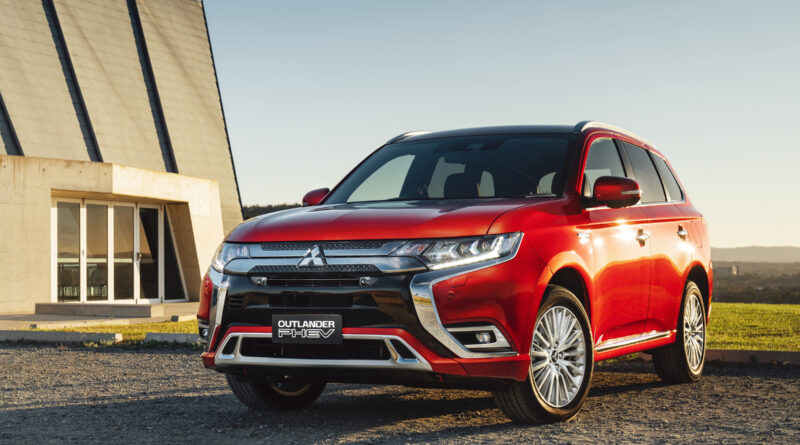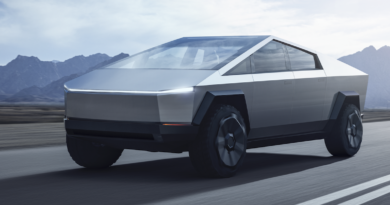Mitsubishi Outlander GSR PHEV review
The Outlander PHEV is Mitsubishi’s only electrified vehicle currently on sale (it previously sold the gangly-looking i-MiEV) and was the first plug-in hybrid SUV to hit the market. It takes the five-door body of the Outlander mid-sized SUV and adds electric motors and a battery to allow all-electric driving for short distances.
The Outlander PHEV has been on sale since 2014 but for the MY21 Outlander model (released in October 2020) there is a new model variant called the GSR.
Key to its appeal is new colour schemes and a firmer, more sports-focused suspension tune.
Just 150 GSR models will be made available in Australia, at least initially.
Want the latest EV news and reviews delivered to your inbox?Subscribe to our weekly newsletter!
While Toyota dominates the sales charts with its RAV4 Hybrid, the Outlander provides the ability to drive on electricity alone due to its PHEV drivetrain.
Until late 2020 (when the Ford Escape PHEV arrived) Mitsubishi had the market to itself.
Value
There’s a price to pay for the PHEV – about $12,000. That’s how much extra the plug-in hybrid version costs over a regular Outlander.
Otherwise, equipment levels are similar to the regular Outlander range, albeit without the option of a third row of seats; the batteries and electric motor in the rear take up space under the floor, making it impossible to fit the seats. For the same reason a spare tyre is also not fitted.
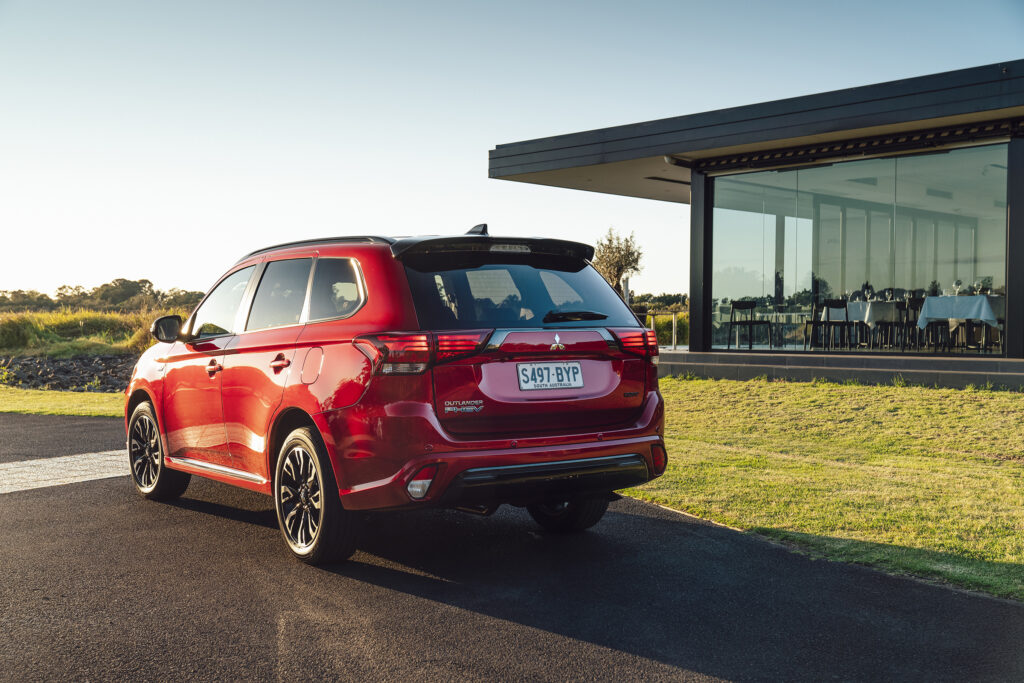
There are now three models in the Outlander PHEV lineup: ES, GSR and Exceed.
For $51,990 drive-away the ES gets smart key entry, dual-zone ventilation, digital radio tuning, auto headlights and wipers, reversing camera, rear parking sensors and 18-inch alloy wheels. There’s also an 8.0-inch touchscreen incorporating Apple CarPlay and Android Auto.
The previously optional suite of advanced driver assistance systems (ADAS) is now standard on the ES, adding auto emergency braking (AEB) and active cruise control.
The GSR costs $56,490 and adds tinted windows, heated front seats, cargo blind, roof rails, electric tailgate, front parking sensors, powered driver’s seat, rear cross traffic alert and blind spot warning. There are also various design and trim elements unique to the GSR. It gets a focus on black over chrome, for example, from the grille to the rear spoiler. Even the unique alloy wheels have black highlights and the roof is in contrasting black.
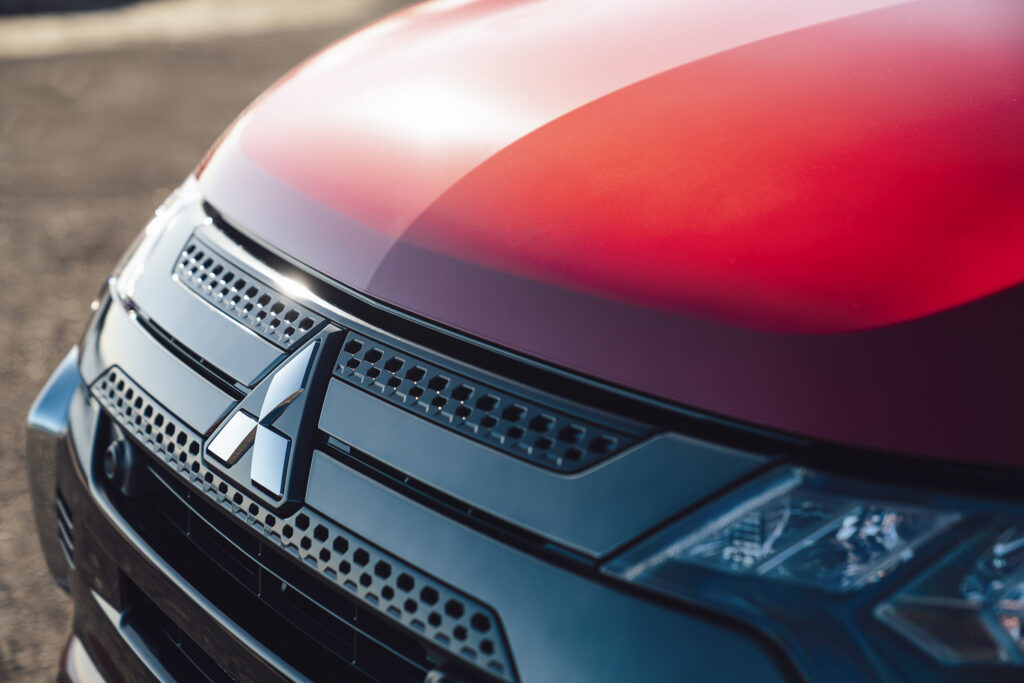
Inside, the GSR gets fake suede seat trim with some fake leather on the outer edges.
The big change for the GSR is with the suspension. It gets firmer springs (11 percent at the front and 5 percent at the rear) as well as Bilstein shock absorbers.
The top-shelf Outlander PHEV Exceed ($60,990) reverts to the softer suspension used in the ES.
But it picks up more gear, including some real leather on the seats, a 360-degree camera, satellite-navigation, LED headlights, sunroof and app connectivity that allows basic information (battery capacity, control of the ventilation) via a smartphone.
Inside
It’s a basic layout inside but one that mostly works from a functional perspective. The 8.0-inch touchscreen is tilted slightly towards the driver and there’s generous storage through the centre console and doors.
Seats are comfortable, although could do with more lateral support.
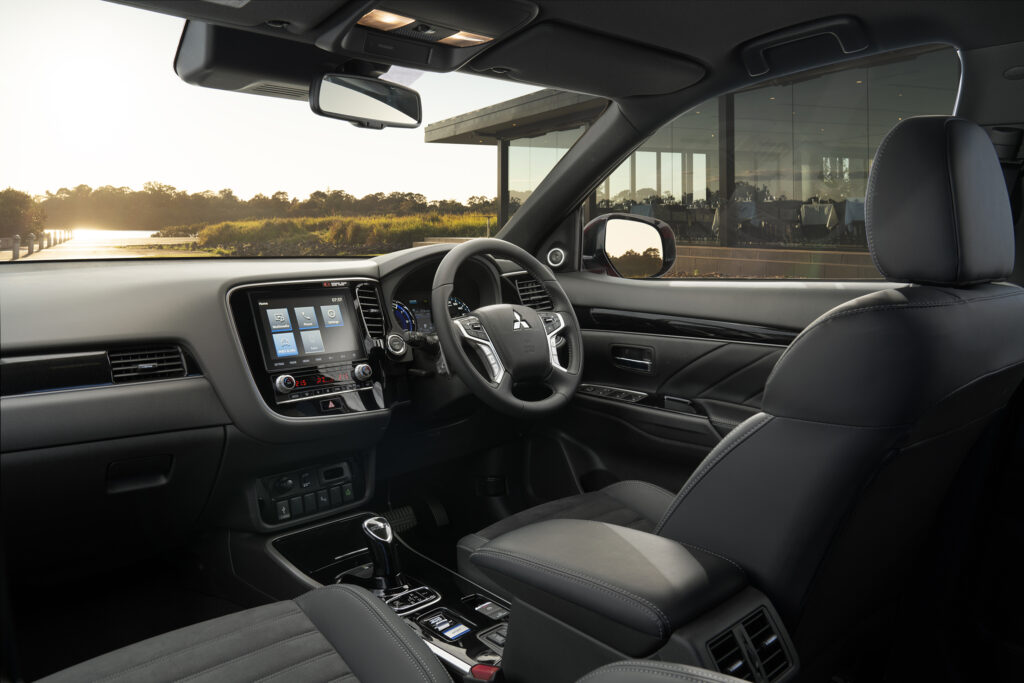
The unique readouts built into the instrument cluster and central display – giving info on energy usage and where the electrons are flowing – is the main difference between a regular Outlander and the PHEV. The pistol-like gear selector is also unique to the PHEV.
Various gloss black finishes on the GSR step up the visuals, although it’s still clearly a mainstream SUV.
There’s ample space up front and in the rear. Those in the back get plenty of head room and a broad rear seat. There’s a small lump in the centre of the floor but it’s not intrusive.
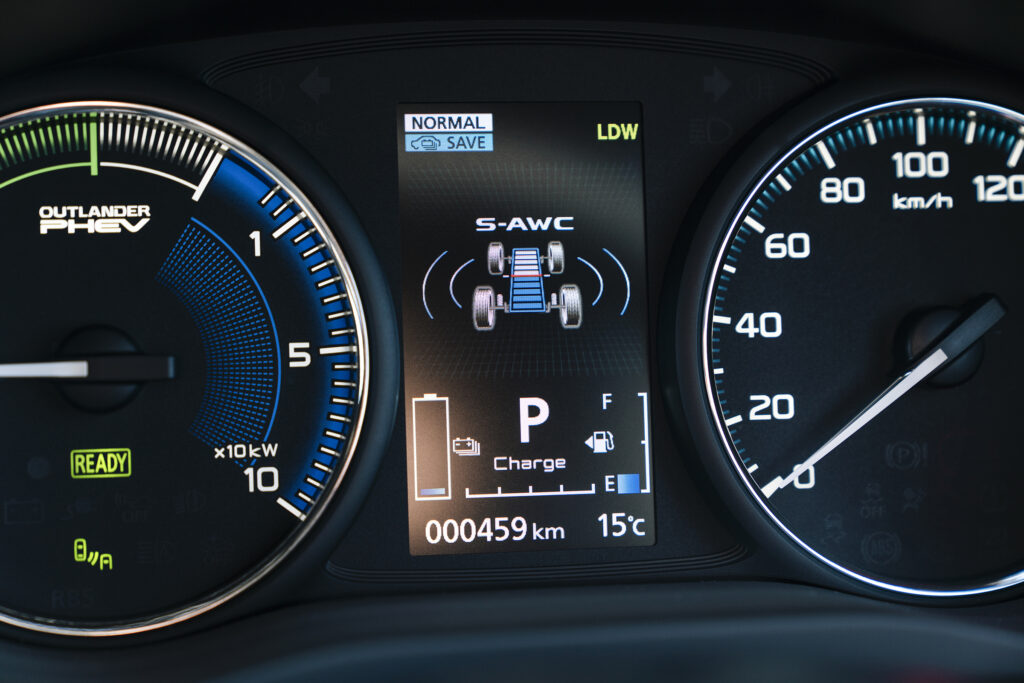
Another couple of USB plugs in the rear keep devices charged.
The boot floor is relatively high but it’s a broad, flat space. A 60/40 split-fold function allows for bulkier items, while charging cables are stashed under the floor in a tailor-made binnacle.
Performance and efficiency
As with all plug-in hybrids there’s a mix of petrol and electricity.
For most driving you can leave the work to the electrical side of the Outlander PHEV.
Two electric motors provide all-wheel drive traction. There’s 60kW up front and a larger motor at the rear making 70kW.
Choose EV mode and you’ll only use those electric motors, at least until the batteries are depleted or you call on maximum power, at which point the petrol engine chimes in. It’s easy to keep an eye on what’s going on with the power gauge that replaces a traditional tachometer. It shows how much electric power you’re using before spinning around further into a tacho-like display that indicates the petrol engine is in play.
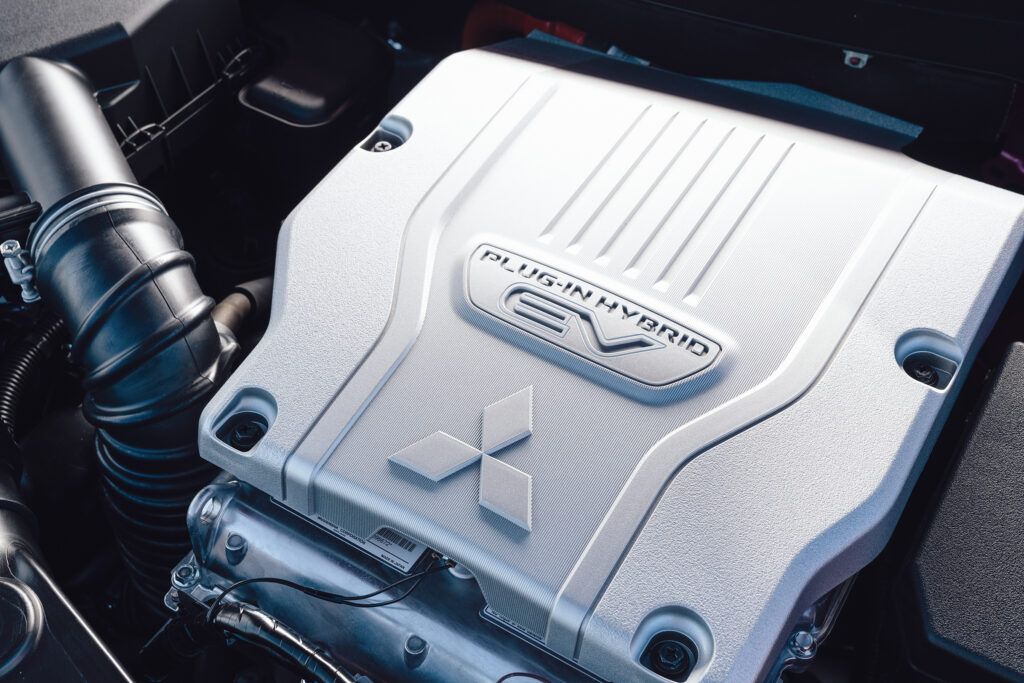
Using only the electric motors there’s enough power to keep pace with traffic and maintain a 100km/h country cruise. Acceleration is generally modest but more than enough for everyday duties.
Energy consumption is officially claimed at 16.1kWh per 100km, although we found it hovered around 21kWh/100km. That’s still decent, although it means less than the claimed 55km of electric range.
Stylish paddle shifters can be used to select between six levels of regenerative braking; B0 allows the car to coast with no resistance, while B1 to B5 provide progressively more regen, providing a mild braking effect while pumping electricity back into the batteries.
But you’ll still need the engine occasionally.
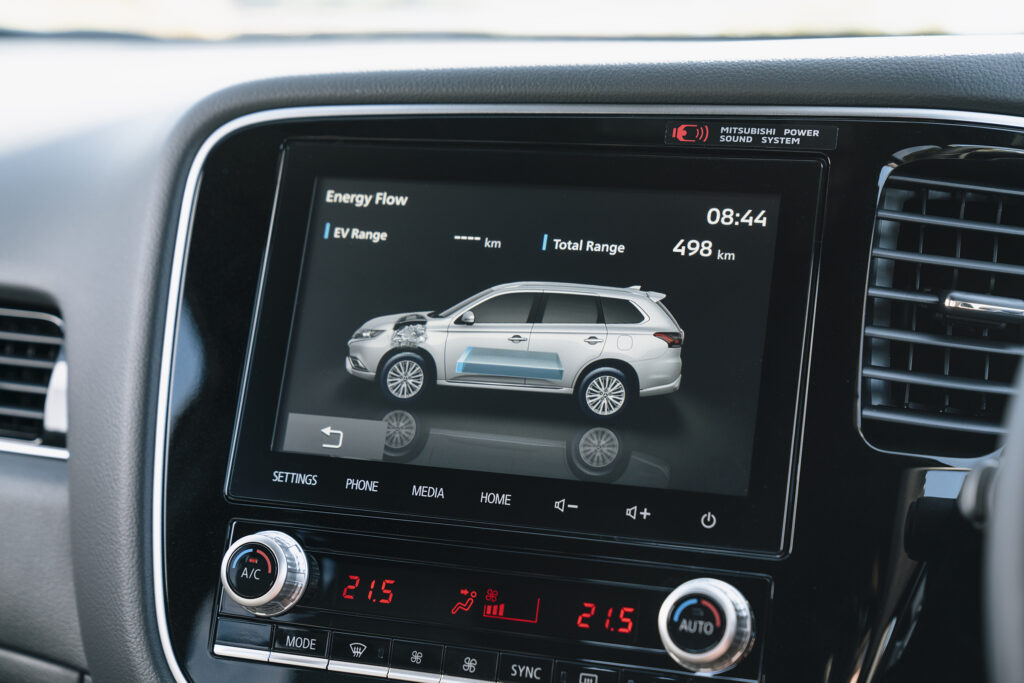
The Outlander PHEV uses the same basic 2.4-litre engine of the regular Outlander, albeit with a very different tune. It’s been tuned for efficiency so doesn’t make as much power (94kW and 199Nm is all that’s on offer).
On a longer drive that engine can be used purely to charge the batteries.
But it can also drive the car through the front wheels, adding performance.
Call on everything by pressing the throttle to the floor and the initial response is a tad dozy. But once the engine builds some revs and passes the 4000rpm mark (at which point the engine switches from the efficient Atkinson cycle back to a more power-focused Otto cycle) and things start to get more invigorating.
The Outlander PHEV can also tow up to 1500kg.
Charging
Since late 2019 the Outlander PHEV has had a 13.8kWh lithium-ion battery.
It can be charged via a Type 1 plug (Australia is fast moving to Type 2 charging plugs) providing up to 3.7kW of AC power. Using a regular powerpoint (2.4kW) the charge time is 6.5 hours, but utilise a wallbox and the charge time reduces to 3.5 hours.

The Outlander PHEV is also a rarity in allowing DC charging for its plug-in hybrid system. Using a CHAdeMO plug it can accept up to 50kW, for a 25-minute charge up to 80 percent (at which point the charge power is throttled back to protect the battery).
There’s also a 45-litre fuel tank, which should provide upwards of 500km of additional driving range, depending on how you use the car. Sure, the PHEV benefits from regenerative braking – acting like a regular hybrid in capturing braking energy as electricity – but once using petrol alone you’re carrying around plenty of weight in batteries and electric motors, in turn reducing fuel efficiency.
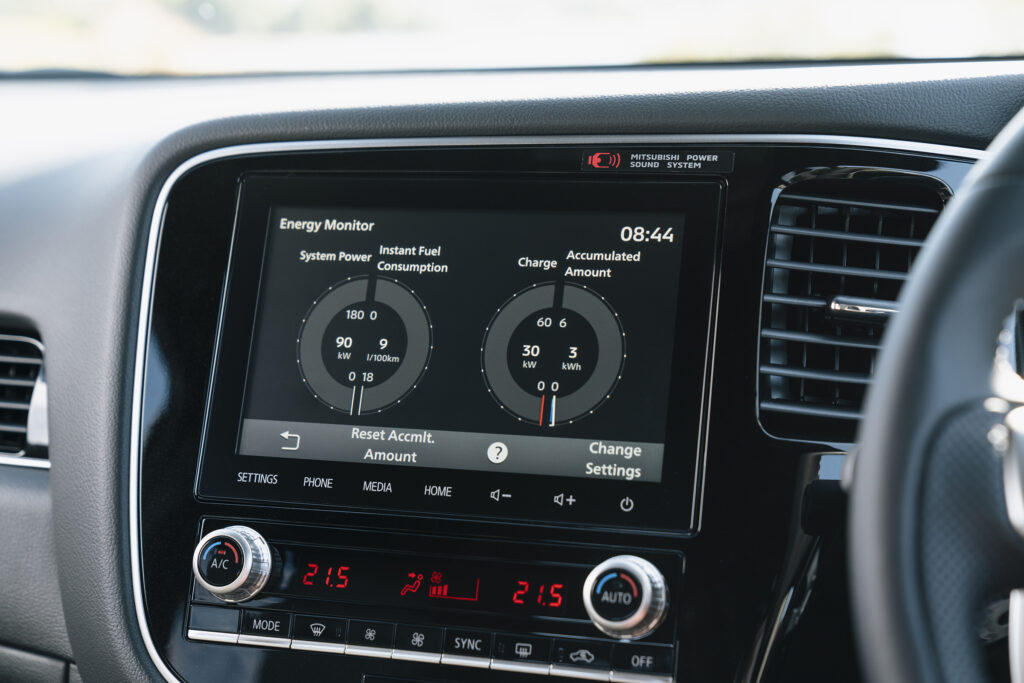
The Outlander PHEV is also designed for bi-directional charging (all PHEVs since the MY17 model that arrived late in 2016 have that functionality). That means it can feed electricity back into the grid or power your home, provided you spend thousands more on the charging hardware required to make that happen.
Its 13.8kWh battery pack is similar in size to a Tesla Powerwall (13.5kWh), so likely won’t be enough to go off the grid, at least for most Australian homes. But it’s a way to potentially utilise free electricity (from public chargers or a solar system) overnight, or sell electricity back to the grid at peak times before charging at off-peak rates.
Ride and handling
The big change with the Outlander PHEV GSR is with the suspension.
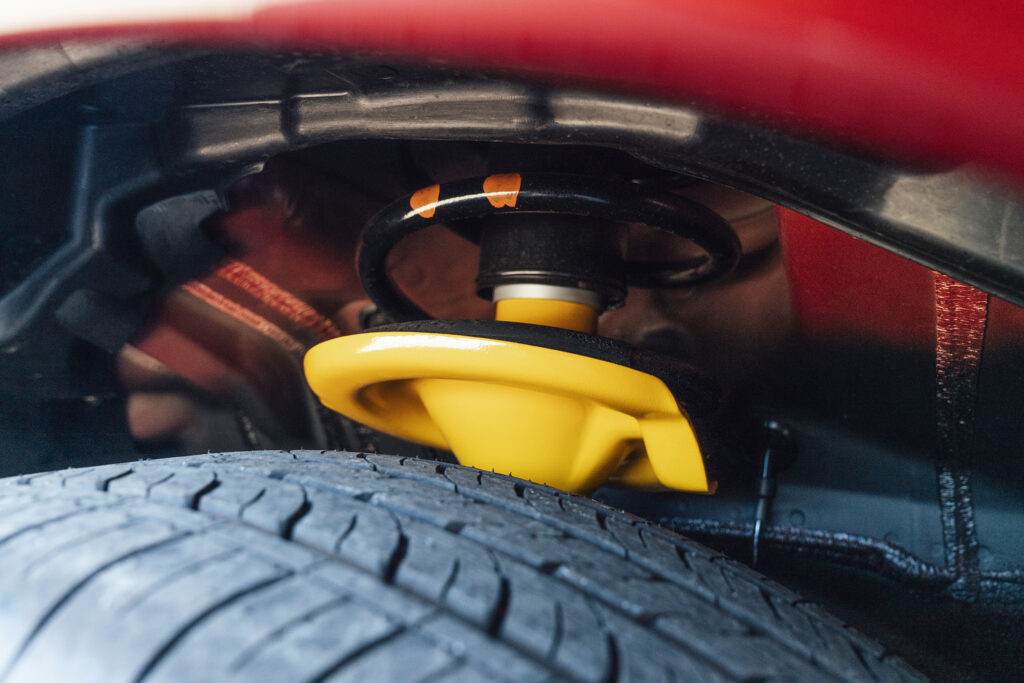
The Outlander has never been particularly sharp around corners and engineers have tried to tackle that with some Bilstein shock absorbers and stiffer springs front and rear.
It makes a big difference, with the Outlander far better tied down, particularly above 60km/h. That means better control and recovery from bumps. For the most part it also improves the overall ride quality, with the superior body control reducing movement at speed. There is one exception to that: low speeds, at which point the inherent stiffness makes itself known with more jiggling over bumps.

But we’ll take that any day. Short story is the GSR is the pick of the PHEVs in the way it tackles corners; the sooner Mitsubishi utilises this suspension tune on the ES and Exceed, the better.
The GSR also points more assertively, responding to steering inputs with more vigour. It’s a shame the steering is still overly light, lacking the feel and feedback for genuine sportiness.
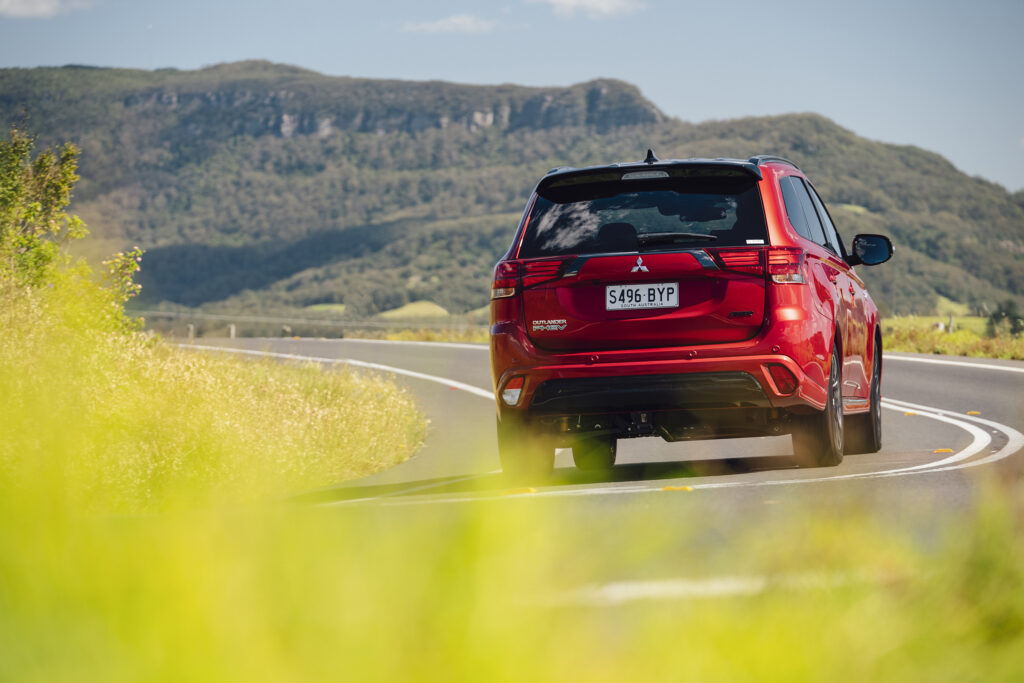
The tyres, too, aren’t overloaded with grip, so if you’re one who likes to push on their may be the occasional yelp or squeal as they work to hang on.
Party tricks
The Outlander is designed to do some sort of off-roading.
Mitsubishi pushed its Outlander PHEV to the extreme in 2014 by entering it in the Australian Safari rally that traversed some of outback Australia’s most challenging roads. The mostly standard car finished 19th outright and won its class (it was the only car in its class) in a field of purpose-built rally machines.
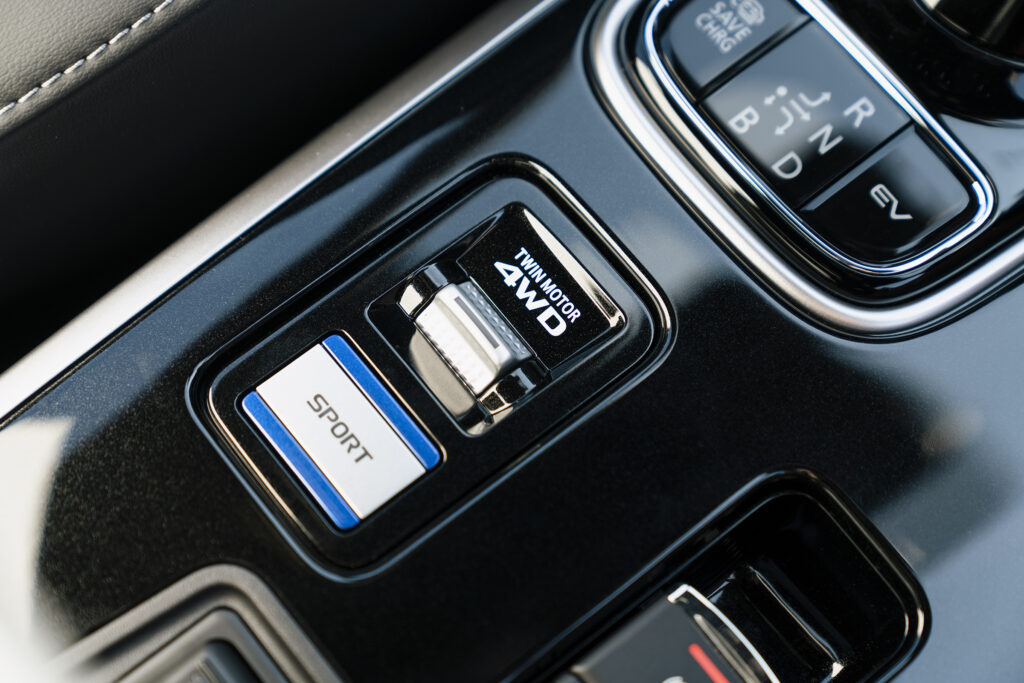
Key to its mild off-road ability is a four-wheel drive system than can be locked in 4WD or you can select a Snow mode (designed to maximise traction) or leave it in Auto and let the car work out where best to send the drive.
It’s not designed to go anywhere, but the precise control of the electric motors means the Outlander can at least get its tyres dirty.
Safety
Like other Outlanders the PHEV gets a five-star safety rating from tests conducted in 2014.
Seven airbags help provide the passive crash protection, while active safety systems such as AEB bring the Outlander PHEV up to modern safety standards.
The PHEV GSR also gets blind spot warning and rear cross traffic alert.
Verdict
The revised suspension of the GSR undoubtedly makes the Outlander PHEV a nicer thing to drive. Sharper and more confident, it’s a step in the right direction, albeit with other improvements easy to see.
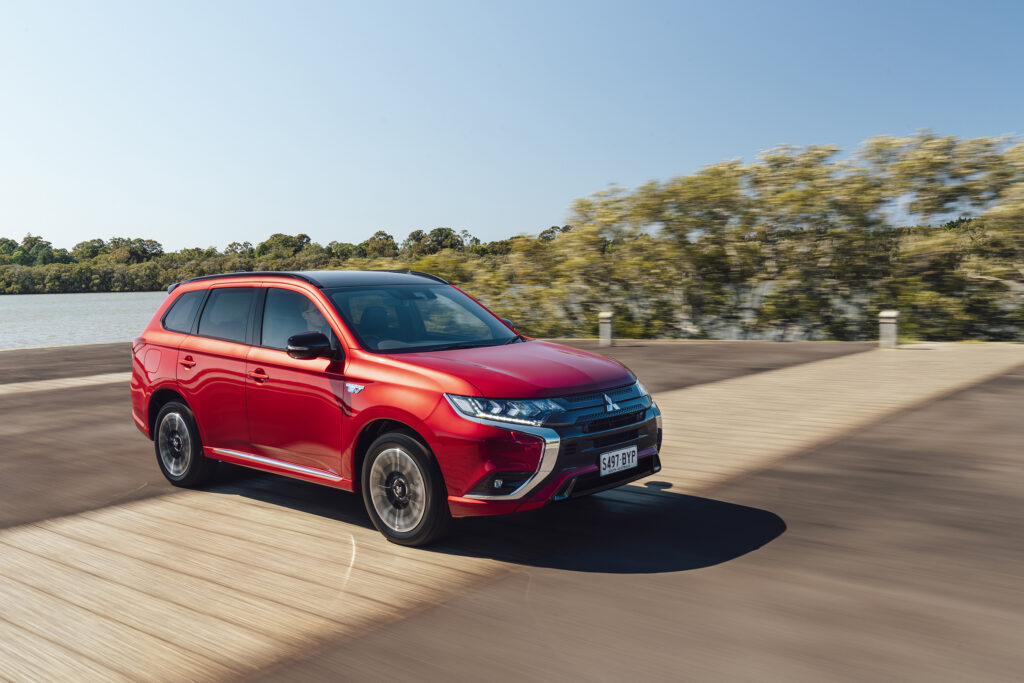
It’s difficult to see Mitsubishi not making this suspension tune available on more models or a larger batch of Outlander PHEVs in future.
That the GSR also comes with worthy styling updates and a decent level of equipment adds to its appeal, even if the price of adopting plug-in hybrid tech is still high.
Mitsubishi Outlander GSR PHEV specifications
Price: $56,490 drive-away
Basics: PHEV, 5 seats, 5 doors, SUV, AWD
Range: 55km
Battery capacity: 13.8kWh
Battery warranty: 8 years/160,000km
Energy consumption: 16.1kWh/100km
Motors: 1 front 60kW and 1 rear 70kW
AC charging: 3.7kW, Type 1 plug
DC charging: 50kW, CHAdeMO plug
0-100km/h: NA

